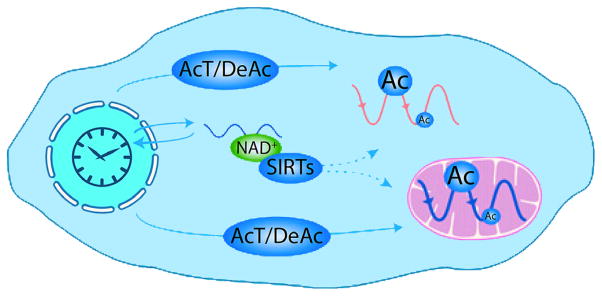Fig. 4.

Circadian acetylation in the cell. Scheme representing plausible mechanisms that the circadian clock might use to generate cytosolic and mitochondrial acetylation rhythms. The activity of AcT, including CLOCK, together with DeAc, might be controlled through transcriptional and post-transcriptional mechanisms. In addition, the circadian clock may also use the nicotinamide adenine dinucleotide (NAD+)-dependent deacetylases SIRTs to modulate protein Ac, because NAD+ levels are rhythmic in the cytosol. Reproduced from Rey & Reddy (2013). © National Academy of Sciences of the United States of America. Ac, acetylation; AcT, acetyltransferases; DeAc, deacetylases; SIRTs, sirtuins.
